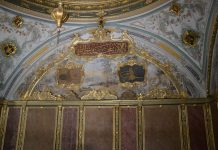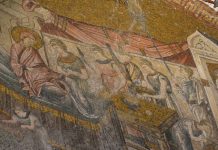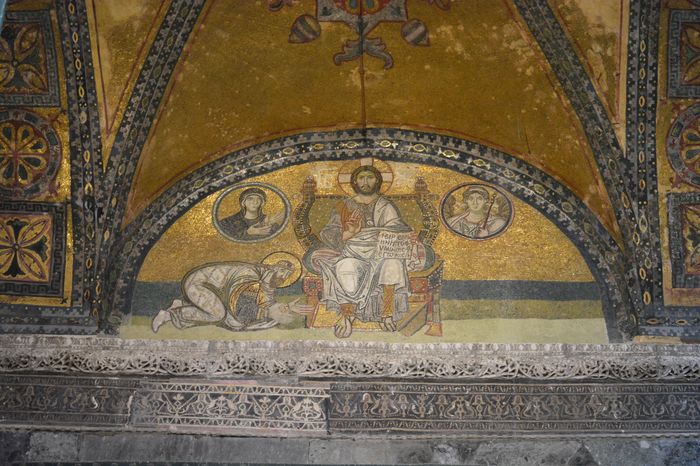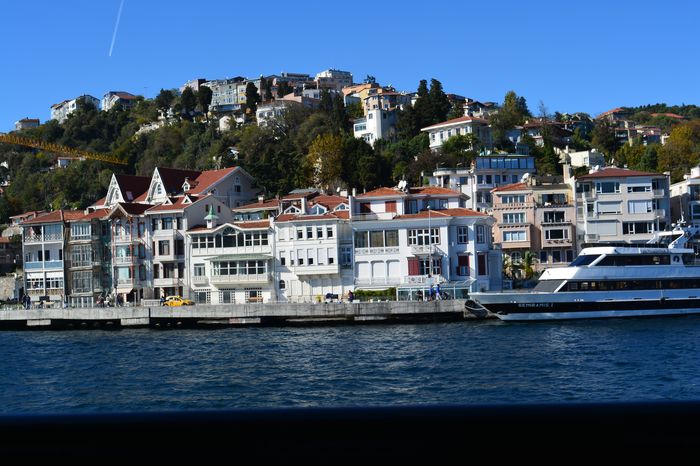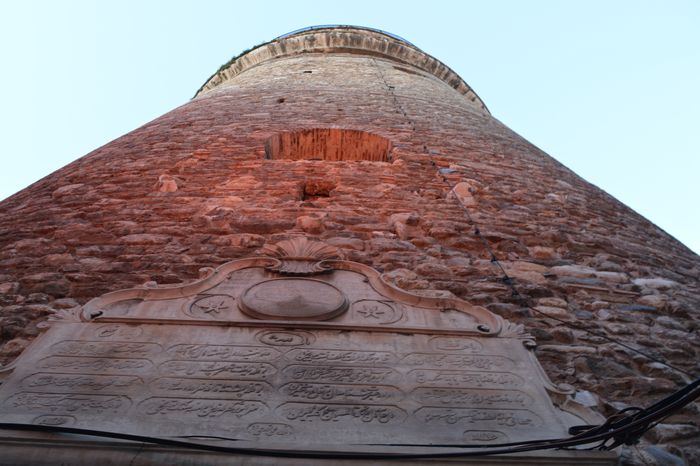The good barbarian king Flaccitheus, leader of the Rugi people across the Danube, maintained warm relations with the holy man until his daughter-in-law tried to rebaptize catholic Christians—for she was probably an Arian—and Severinus raised his voice to get her to cease, as she apparently did, at least for a time. Odoacer’s appearance introduces his followers to this account, from a people called the Heruls who liked to serve in the Roman army. Other Heruls would wind up fighting for Constantinople’s generals Belisarius and Narses inside Rome’s world; still others fought for Rome against barbarians in Hungary and were destroyed for their pains; the last of them faded to the north and disappeared from history not long after.
Rescuing captives, everyday business when you live among warlords, was part of the holy man’s job. After rescuing one man, Severinus sent him back across the Danube on market day to look for another particular man, whom Severinus described in detail, even his clothing and where in the market to find him. When found, the second man beseeched his new friend to take him to the man of God, offering any price for the favor. He turned out to be carrying relics of saints Gervasius and Protasius, the same saints whose bodies Ambrose had discovered in a conveniently anti-Arian moment in Milan 100 years earlier.31 Severinus was happy to receive saints who had confounded Arians, and he put them in his basilica along with the relics of many others. Relics of John the Baptist, no less, would join them not long after, coming not from the Holy Land far to the east but from across the Danube—barbarian territory, but not without its powerful saints jeep safari bulgaria.
Beneficiary rejected
Severinus’s most impressive miracle has the weakest attestation, and the beneficiary rejected it. He successfully prayed to bring a priest who had died back to life, only to have the priest complain: “By the Lord I beg you, don’t hold me here longer or cheat me of the eternal rest I had begun to enjoy.” And he then fell asleep again in death. The subdeacon Marcus and the doorkeeper Maternus kept this story secret until after Severinus’s death, for they had sworn to the holy man that they would not reveal it while he was alive; they then passed it along to Eugippius.
Severinus’s death left the community at the mercy of brutes. A bad barbarian (a son of the good king we just heard of) sacked the monastery, but then his own nephew Fredericus quickly killed him in turn. Odoacer, now ruling in Italy, made war on the rebels, but Fredericus, now the new king in his own right, fled to join Theoderic’s forces in the southeastern Balkans. No one reading Eugippius’s book when it was written in Italy in 511 failed to notice the future ruler of Italy playing this bit part, but for now Odoacer’s general immediately ordered the remaining Romani to migrate to Italy if they wanted protection. “Then all the inhabitants of that place went out as from the house of servitude in Egypt.”
Eugippius, our source, was there on the day when they opened Severinus’s grave, six years after his death, and the odor of sanctity was very sweet in the surrounding air. The wooden coffin was loaded onto a horse- drawn carriage, and the procession wended its way south to Italy—and not only to the safety of Italy, but well south, to Naples, passing across the plains to Ravenna and Rimini, settling for a time at Montefeltro near modern San Marino.
Woman named Barbara
While the members of the straggly group were there, they received a message from a woman named Barbara (the name means “barbarian woman” but her rank was illustris, which bespeaks the highest stratum of Roman society) inviting them to come and place the saint in a mausoleum she would establish at the Lucullan Castle at Naples. There he was interred by the holy bishop Victor himself and with what we are assured is the approval and encouragement of Gelasius, bishop of Rome. In that comfortable resting place, far from the frontiers, the story of the holy man could be told and refreshed for the edification of many. It dramatized the now safely abandoned past, a period of disarray on the frontiers; it heartened its hearers with holiness; and it underscored the legitimacy of Odoacer’s rule and thus, a fortiori, of Theoderic’s as well Saxons and leads a small group.
Those days were still in the future in the early 470s, when Odoacer stopped off to see Severinus on his way to Italy. In Italy he joined the imperial bodyguard, now, finally, an officer on the rise in the heart of the establishment. He cast his lot with Ricimer, when that general was at odds with and in a virtual civil war against the short-term emperor Anthemius; but when Ricimer fell, Odoacer found himself increasingly visible under Orestes. Opportunity came when a group of soldiers, Scirians, Heruls, and Torcilingi—in other words, a typical Roman mix—demanded land from Orestes, as generals expected their soldiers to do. Orestes did not re-spond as well as they would have liked, whether because he hadn’t enough to offer or because he wanted more support and service from the troops than they had yet given him. The restless soldiers turned to Odoacer and offered him their loyalty if he would deal on their terms. He seized the opportunity.

